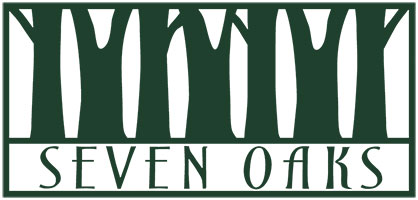Commercial real estate market to remain flat
October 22-28, 2010
Atlanta Business Chronicle
By Giannina Smith
Commercial real estate leaders don’t expect to see much growth in their industry in 2011.
After enduring a difficult 2010, companies will have to focus on keeping existing clients happy and working through contacts and referrals to keep business going in the year ahead.
“We should hold up to the same level as 2010. No real growth in the commercial sector but no negative absorption, and the banks will start to settle down and release some of their REO properties at current values. Overall growth will be flat for most of 2011,” said Alan Joel, 2010 president of the Atlanta Commercial Board of Realtors.
What little growth there is will occur in the health-care and energy industries, as well as the value retail and restaurant sectors, Joel said. And the westside of Midtown is, and will continue to be, a “hot spot” in 2011.
“Those industries or real estate that provide a value product will produce business,” Joel said.
To stay competitive during the difficult economy, many commercial real estate firms moved from a development-based model to one that is more asset-management oriented – providing both property management and leasing as well as limited development opportunities.
This is a trend that will continue in the new year, said Bob Voyles, CEO of Seven Oaks C. LLC.
“We are still pursuing build-to-suit and very limited development opportunities, but in order to survive, firms that historically have had a development pipeline have had to move to other recurring sources of income in order to stay competitive,” he said.
Voyles sees the immediate future as a year of consolidation and transition, and agrees that banks that have held on to underperforming real estate loans will begin to release some property back to the market for sale.
“The steep discounts that so many people were anticipating 18 months ago are simply not going to be there,” Voyles said.
Window of Opportunity
Particularly in the office sector, tenants will continue to take advantage of the slow-down to renegotiate their leases in advance of expiration dates and consolidate their space during tough times as well as capture better space for lower costs.
“They see a window of opportunity to renegotiate leases or to move to other buildings and take advantage of unusually low market rents, coupled with landlords’ willingness to, in the case of new buildings, use the money for tenant improvement allowances,” Voyles said.
Voyles expects Perimeter and Buckhead to remain particularly active commercial real estate submarkets. Landlords in these markets will begin tightening up concessions and see an improvement in rental rates compared to 12 months ago.
“For all the negative press that has been in the national press about Buckhead, we are starting to see those buildings, those big blocks of space, slowly filling up,” he said.
Tishman Speyer’s 20-stry Two Alliance Center has seen some of the largest Buckhead deals in 2010, including law firm Thomason Hine LLP’s 30,048-square-foot lease deal signed in the second quarter.
Also included among recent deals, Greenberg Traurig LLP inked a 110,329-square-foot lease deal at Cousins Properties Inc.’s Terminus 200. And logistics software provider ORTEC International announced plans to relocate to the 34-story 3630 Peachtree tower, which was developed by Duke Realty Corp. and Pope & Land Enterprises Inc.
Path to Sustainability
As the commercial real estate industry in Atlanta enters a new decade, Voyles predicts green building and environmentally sustainable business environments will continue to gain traction.
“I do think that the rent per square foot may actually be higher in some of these buildings, but the space will work so much more efficiently that their actual cost per employee will reduce, so one cancels out the other. Bthen you can get into space that works much better functionally for the individual business,” Voyles said.
Sustainable design has already made its mark on Atlanta’s office market. The 485,000-square-foot Two Alliance building, which opened in late 2009, achieved LEED Gold certification through the U.S. Green Building Council. The office tower uses 40 percent less water and 20 percent less energy than similar structures.
And architect Perkins + Will Inc. recently invested more than $10 million in renovating the six-story 1315 Peachtree building, which is expected to achieve LEED Platinum certification. The building features a radiant heating and cooling system, which replaced the large compressors that usually cool buildings.
Ten years down the road, Voyles said, he expects office development in the suburbs to slow with development becoming more focused on intown markets.
“Where through the ‘80s you saw dramatic growth all the way out in the far suburbs, I think you’re going to see the inner core markets like Cumberland, Buckhead, Perimeter and downtown and Midtown, with more concentration of office there and less growing in the far suburbs,” he said.
